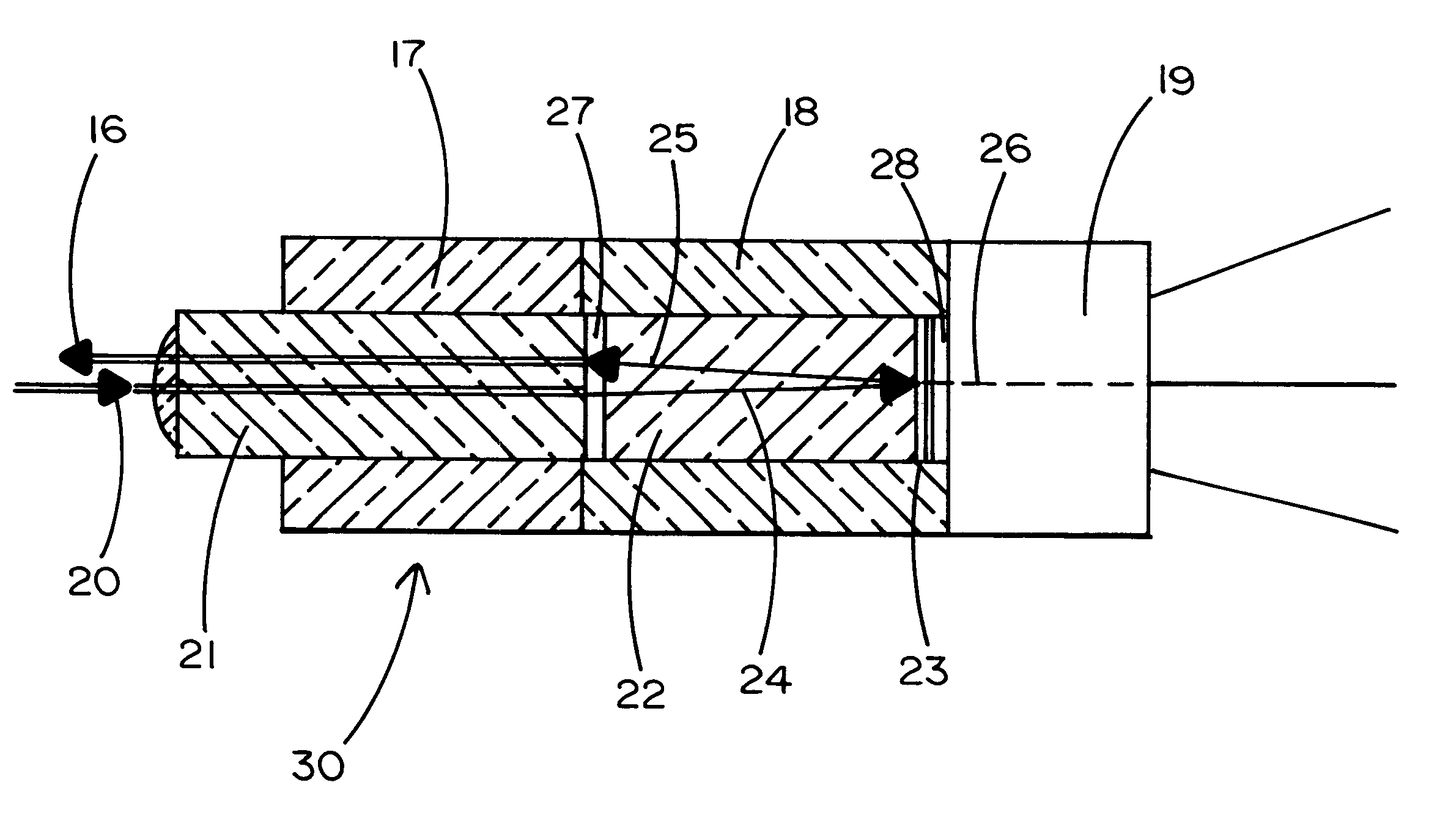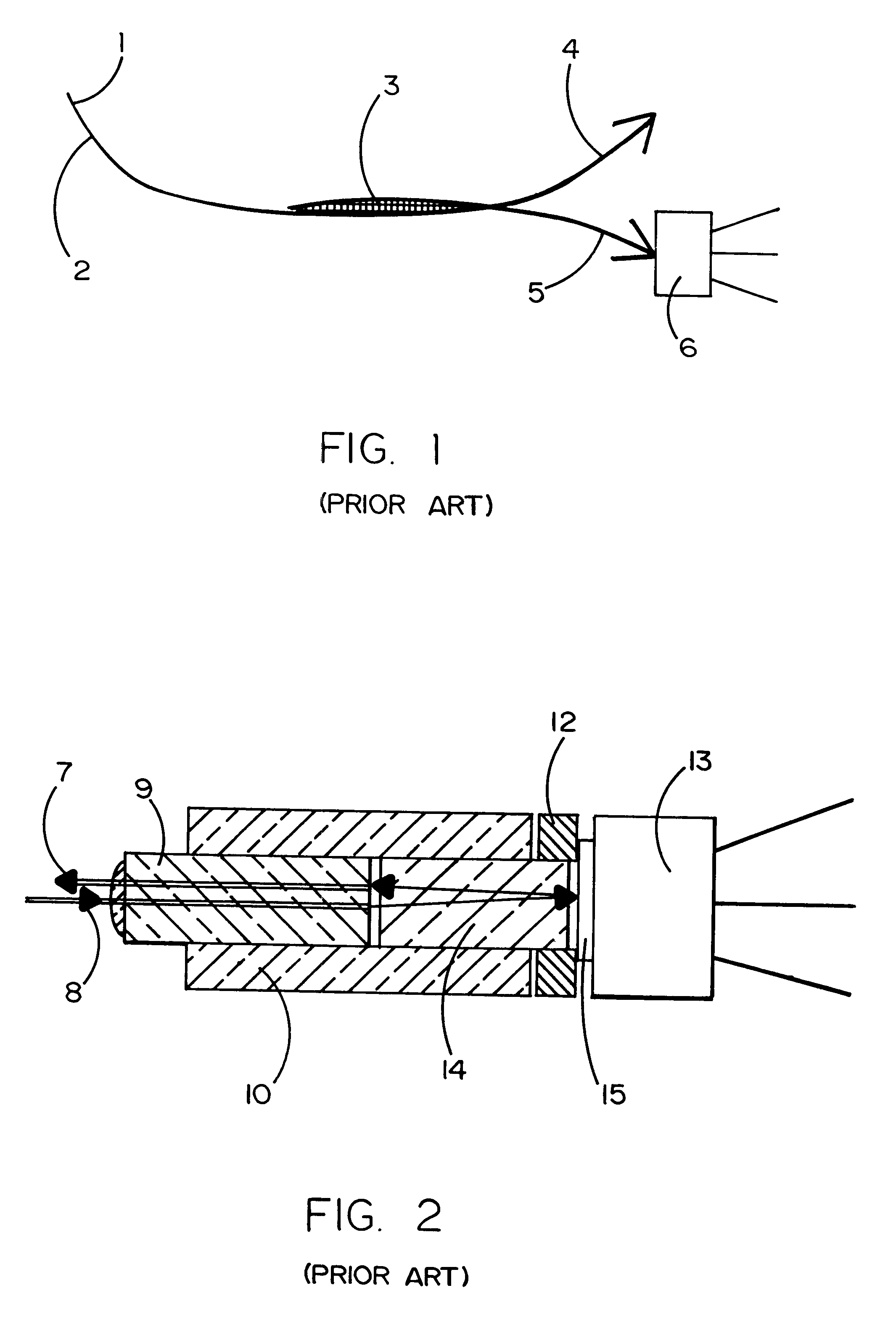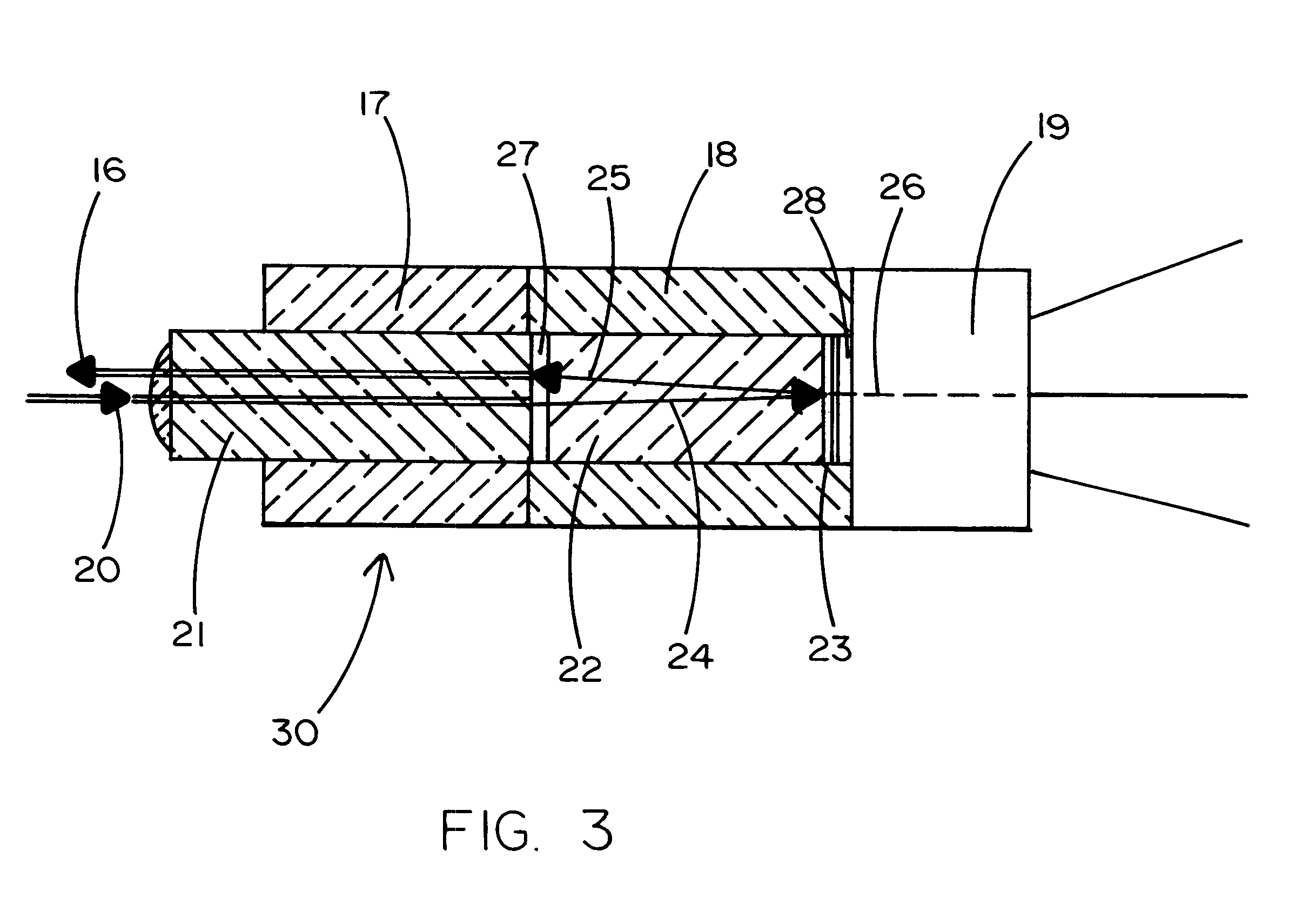Multi-port optical power monitoring package and method of manufacturing
a technology of optical power monitoring and packaging, applied in the field of optical power monitoring packages, can solve the problems of increasing insertion loss, unstable insertion loss of assemblies, degrading the overall performance of systems, etc., and achieves low insertion loss, easy manufacturing, and high accuracy
- Summary
- Abstract
- Description
- Claims
- Application Information
AI Technical Summary
Benefits of technology
Problems solved by technology
Method used
Image
Examples
Embodiment Construction
Reference will be made to FIG. 3 which illustrates a preferred embodiment of the present invention. An optical filtering assembly 30 used in the temperature compensated multi-port power-monitoring packages is described. The optical path of the inventive assembly comprises two optical glass fibers (input fiber 20 and reflective fiber 16) inserted into a multi-capillary glass ferrule 21 to provide a fiber-ferrule sub-assembly. Also included in the assembly is a collimating (GRIN or aspheric) lens 22 and a spectral shaping (reflecting) glass filter 23 which is coated directly onto the GRIN lens 22. The lens 22 collimates the light emitted from the input optical fiber 20 into parallel rays, which hit the filter element 23. The filter splits the input collimated light 24 into two beams 26 and 25. The transmitted beam 26 is a product specific percentage typically small (1% or less) of the total optical power. After the transmitted beam 26 passes through the filter element 23, it then ente...
PUM
 Login to View More
Login to View More Abstract
Description
Claims
Application Information
 Login to View More
Login to View More - R&D
- Intellectual Property
- Life Sciences
- Materials
- Tech Scout
- Unparalleled Data Quality
- Higher Quality Content
- 60% Fewer Hallucinations
Browse by: Latest US Patents, China's latest patents, Technical Efficacy Thesaurus, Application Domain, Technology Topic, Popular Technical Reports.
© 2025 PatSnap. All rights reserved.Legal|Privacy policy|Modern Slavery Act Transparency Statement|Sitemap|About US| Contact US: help@patsnap.com



